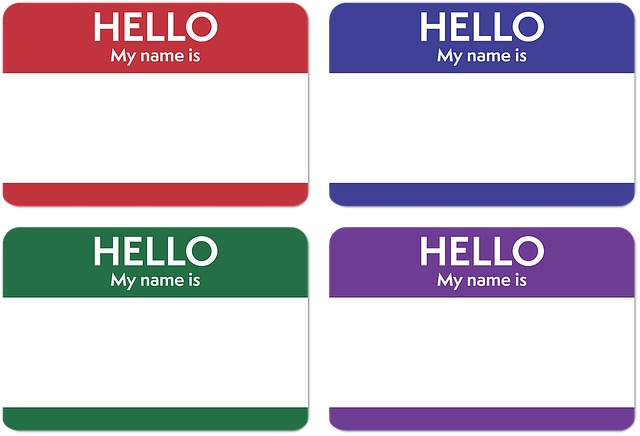What’s in a name? A lot more than you might think.
March 14, 2017

What's in a name? A lot more than you might think.
Mike Pile
One of the occupational hazards of being a professional namer--yes, there is such a job--is that you notice then analyze the brand names you sees while out and about. A simple errand becomes an endless exercise in analytics when surrounded by vans delivering home meal kits from Purple Carrot, Blue Apron, PeachDish, Just Add Cooking, Sun Basket, Hello Fresh, HomeChef, and Plated.
This obsession has no bounds. I recently found myself ruminating about the names of the medical devices and equipment in the O.R. before, during, and after receiving an innovative outpatient procedure. Wearing a flimsy gown, vulnerably prone on the operating table, and about to be stuck, jabbed, cut, and probed, I was thinking that the name "Sterigard" is a pretty cool brand name for the overhead light.
But before I outline best practices in name development, perhaps it's a good idea to discuss why you should brand your device with a unique moniker.
To name things is to be human. We are compelled by our nature to attach labels to things and events both real and imagined. From biblical times--man gave names to all the animals--to current events--Brexit--names give us brief, complete, and convenient ways to communicate complex ideas.
A name is the most powerful and most cost-effective communication tool there is. No marketing message will be used as long or as frequently as the brand name. It is the single most profound form of communication.
Like a diamond, names are forever. A brand's slogan, logo, message, tone, and even its positioning can and usually will change with the times, but the name is an indelible tattoo. By any measure, it pays to create a name, and it pays hugely to create an extraordinary one. People are going to call your device something, so why not own it?
Here's a simple illustration of what I mean. The condition I was being treated for in the O.R. is called medial epicondylitis (a misnomer, actually, but that's a discussion for another time). Like most medical and scientific terms, the name derives from the Latin, a tradition dating from the Middle Ages. Given this, over the course of hundreds of years, humans have been conditioned to hear Latin or Latin-sounding terms, names, and words as serious, as projecting gravitas. Knowing this, a smart individual seeking sympathy from a spouse or a smart marketer seeking to persuade, say, a health insurer to cover an innovative procedure to remedy the condition, will refer to it as medial epicondylitis, a name saturated with scientific significance, and not by its more commonly known sobriquet, "golfer's elbow."
Creating a name for a medical device is not complicated, but it is hard. It requires time, patience, an open mind, and resiliency. But given its overwhelming strategic impact on the future of the device, it is an effort well worth undertaking.
Here are five steps to follow:
Allow Enough Time
Creating, evaluating, prescreening, and gaining approval for a name can take three or more months. The creative process takes time to simmer, stew, and percolate. Evaluations and approvals will go back and forth, necessitating patience and fortitude. The intellectual property (IP) folks will ask questions and invariably reject your favorite ideas. Resilience is required. None of this is insurmountable and it is well worth it, but expectations need to be managed.
Make or Buy
Professional naming consultants don't have a monopoly on creativity, but they do have one on focus. Naming is fun but difficut and will be but one part of your work day. For a professional, developing your medical device's name is their only job. Furthermore, they provide the experience, independence, and professional perspective that can facilitate the approval process.
Creative Development
It is a common misperception that ideas spring forth from the ether while you're contemplating the stars. Ideas, like fire, require fuel. Naming fuel includes surfer dictionaries, Sanskrit rhyming dictionaries, and glossaries of American sports metaphors, to name a few. Of course, the ideas are only as good as the strategic roadmap that informs and inspires them, so it goes without saying that a crisp, insightful creative brief is paramount.
Evaluation and Feedback
Rejecting ideas is easy. Approving them requires courage. Evaluating any creative output--be it fine wine or a name--involves a degree of subjectivity, but establishing a set of criteria beforehand can minimize capricious winds. Because the name sounds like the name of the boss's mother-in-law is not a reason to reject it. A good start for evaluative criteria would include semantics and linguistics, rational and emotional cues, and descriptive and suggestive sounds and words.
IP Clearance
Creating names may be fun, but having the lawyers reject those names is not. The U.S. Patent and Trademark Office receives 5000 requests per week and reject thousands every year for reasons that are not always consistent request to request. Backup name candidates and rhetorical suasion are good tools to have on hand.
In the end, creating an extraordinary brand name for your medical device requires both science and art, and sometimes a bit of luck. All three of these must have fueled the name for the device I first encountered with my newborn son: the "Circumstraint."
Mike Pile is president and creative director of Uppercase Branding. Reach him at [email protected].
[Image courtesy of MAIALISA/PIXABAY.COM]
You May Also Like


